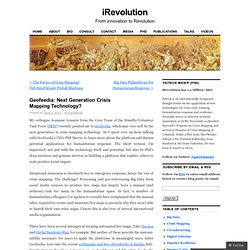

Disaster Charter - Homepage. MMWR: Tornado Fatalities During April 2011 Outbreak. Credit FEMA During a three day period (Apr 25th-28th) of 2011 a storm system of epic proportions spawned 351 confirmed tornadoes across five southern states, killing 338 persons in Alabama, Arkansas, Georgia, Mississippi, and Tennessee. This was the the third deadliest tornado outbreak in U.S. History. More than a dozen of these twisters reached intensities of 4 or 5 on the Enhanced Fujita [EF] scale, which can produce near total devastation. NOAA releases aerial imagery of Tuscaloosa, Ala. tornado damage April 30, 2011 Before and after imagery depicting tornado damage in the vicinity of the intersection of 15th St. Despite an early and accurate forecast, and the issuance of timely tornado watches and warnings, the death toll from this super-swarm of tornadoes was woefully high. Late last week the CDC released an analysis of these storm fatalities in their MMWR that stresses the importance of safe rooms.
Follow the link to read: EF-3 or Greater Tornado Threat – Credit FEMA. World finally agrees on international distress sign ‘AAAGH’. In Britain it’s 999. In America it’s 911. On a submarine it’s S.O.S. In the air it’s Mayday, mayday. And in space it’s ‘Houston we have a problem’. Amid all this confusion, it’s good to know the world will soon be able to rely on one, simple, easily recognisable, international call for help: AAAGH. AAAGH has been chosen because it’s quick to text and fast to type. So as not to cause undue alarm on a ‘plane, the phonetic version, Alpha Alpha Alpha Golf Hotel is recommended. Boutros. Health & Disease Maps. Coordination Saves Lives. InSTEDD. Google Crisis Response. Public Alerts. SUDAN: Satellite Sentinel Project. MapAction. Global Disaster Alert and Coordination System. Emergency and Disaster Information Service.
Crisis Mapping and Disaster Risk Reduction. By Vincent Fung GENEVA, 16 December 2011 - Crisis mapping has emerged in the last five years as a dynamic and open way to visualize and report on crisis and disasters.

With increasing internet connectivity, mobile phone use, and user-generated content, 'crowdsourcing' is gaining traction by taking advantage of information communication technology (ICT) that allows communities and networks to answer some of the world’s most pressing issues. Held for the first-time ever in Europe, the 3rd International Conference on Crisis Mapping (ICCM) was one example of how new technologies and growing networks of tech-savvy individuals and organizations can help to prevent, prepare for and respond to disasters. “ICT tools, such as those used by Crisis Mappers, help us understand what is happening on the ground and who’s affected following a disaster. “The key to this insight is data – we have to continually collect, manage and update our organizational data to feed our analysis. Watch the video. Geofeedia: Next Generation Crisis Mapping Technology?
My colleague Jeannine Lemaire from the Core Team of the Standby Volunteer Task Force (SBTF) recently pointed me to Geofeedia, which may very well be the next generation in crisis mapping technology.

So I spent over an hour talking with GeoFeedia’s CEO, Phil Harris, to learn more about the platform and discuss potential applications for humanitarian response. The short version: I’m impressed; not just with the technology itself and potential, but also by Phil’s deep intuition and genuine interest in building a platform that enables others to scale positive social impact. Situational awareness is absolutely key to emergency response, hence the rise of crisis mapping. The challenge?
Processing and geo-referencing Big Data from social media sources to produce live maps has largely been a manual (and arduous) task for many in the humanitarian space. There have been several attempts at creating automated live maps. But lets click on the picture of the collapsed roof directly to the left. Geofeedia : Search & Monitor Social Media by Location. Big Data for Development: Challenges and Opportunities. The UN Global Pulse report on Big Data for Development ought to be required reading for anyone interested in humanitarian applications of Big Data.

The purpose of this post is not to summarize this excellent 50-page document but to relay the most important insights contained therein. In addition, I question the motivation behind the unbalanced commentary on Haiti, which is my only major criticism of this otherwise authoritative report. Real-time “does not always mean occurring immediately. Rather, “real-time” can be understood as information which is produced and made available in a relatively short and relevant period of time, and information which is made available within a timeframe that allows action to be taken in response i.e. creating a feedback loop. Importantly, it is the intrinsic time dimensionality of the data, and that of the feedback loop that jointly define its characteristic as real-time.
Perceptions rather than reality is what social media captures. “Mr. Like this:
NGDC Tsunami Database. FEMA: GIS - FEMA Mapping and Analysis Center. Flood Maps. Japan Earthquake. Christchurch Earthquake. Volcanoes.